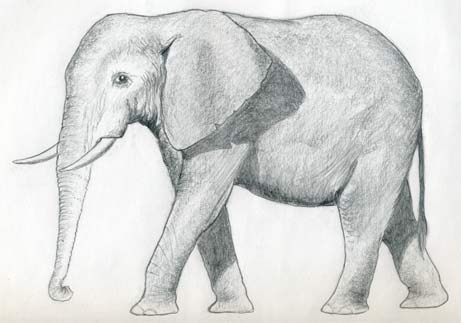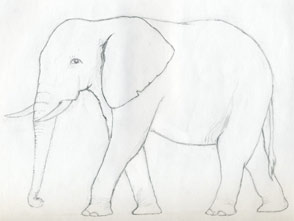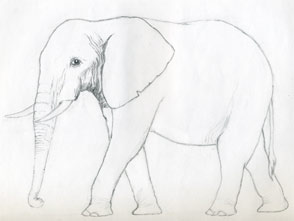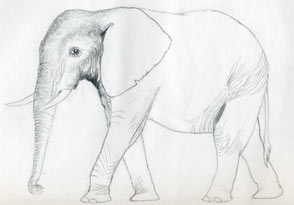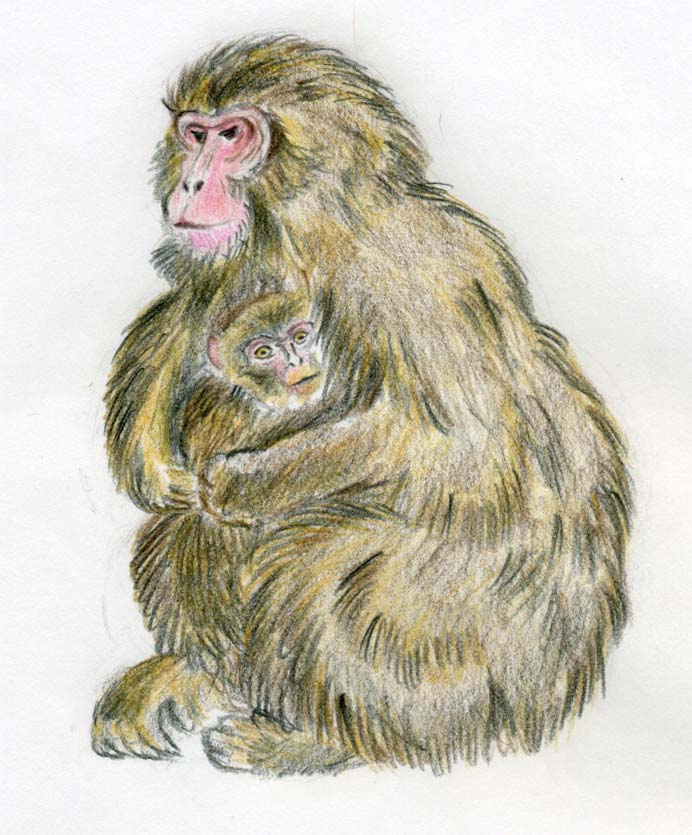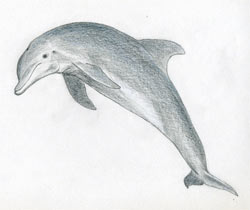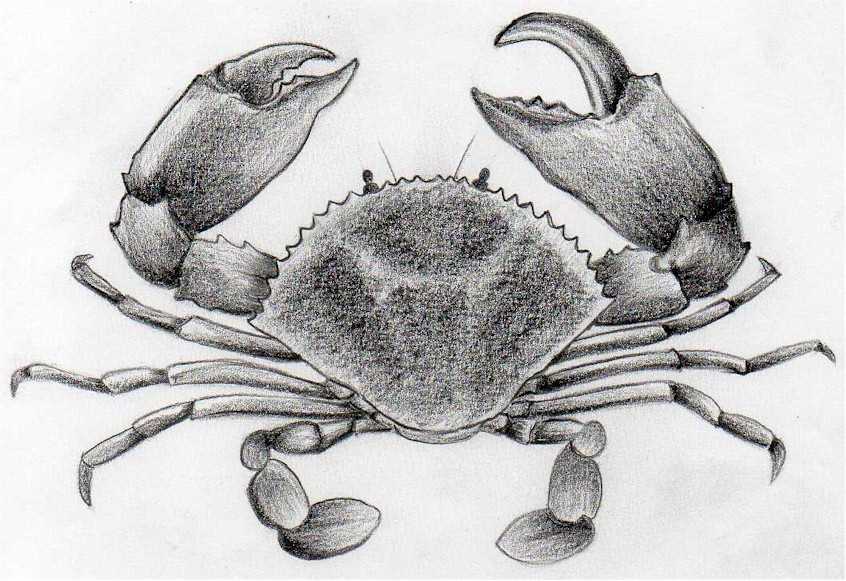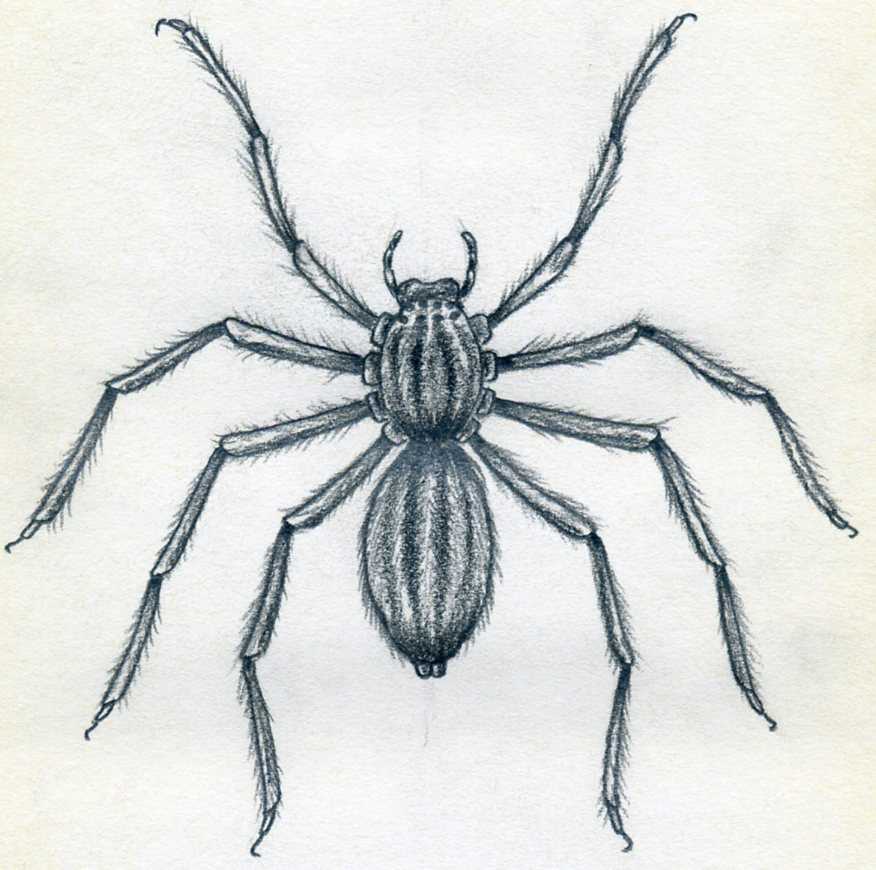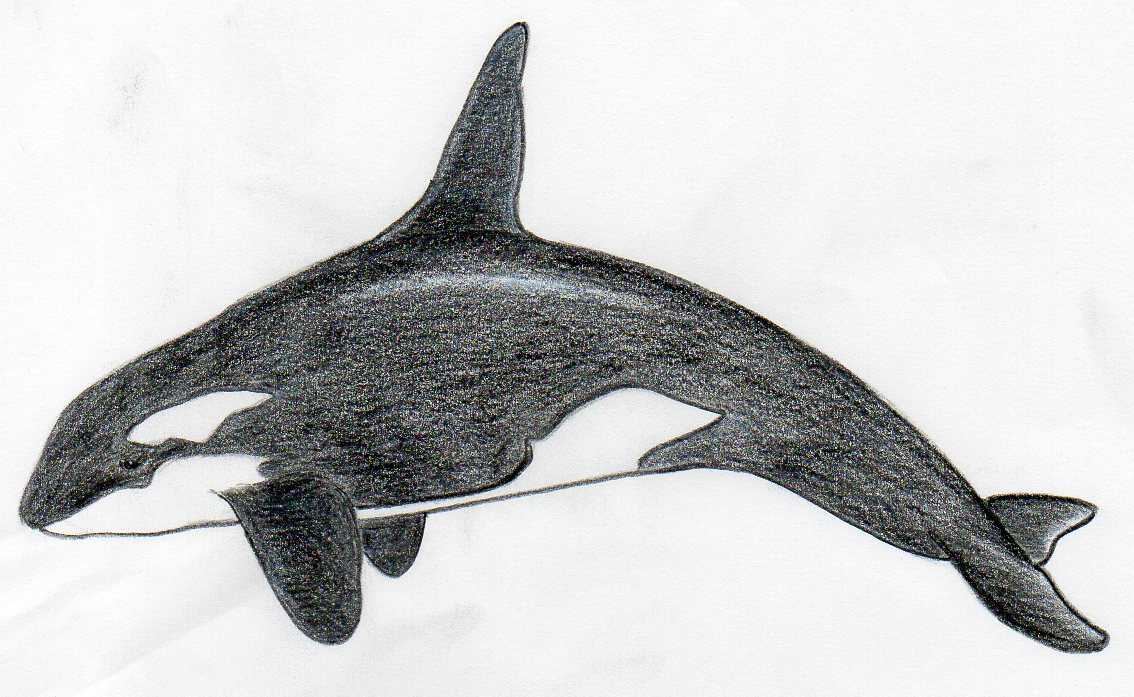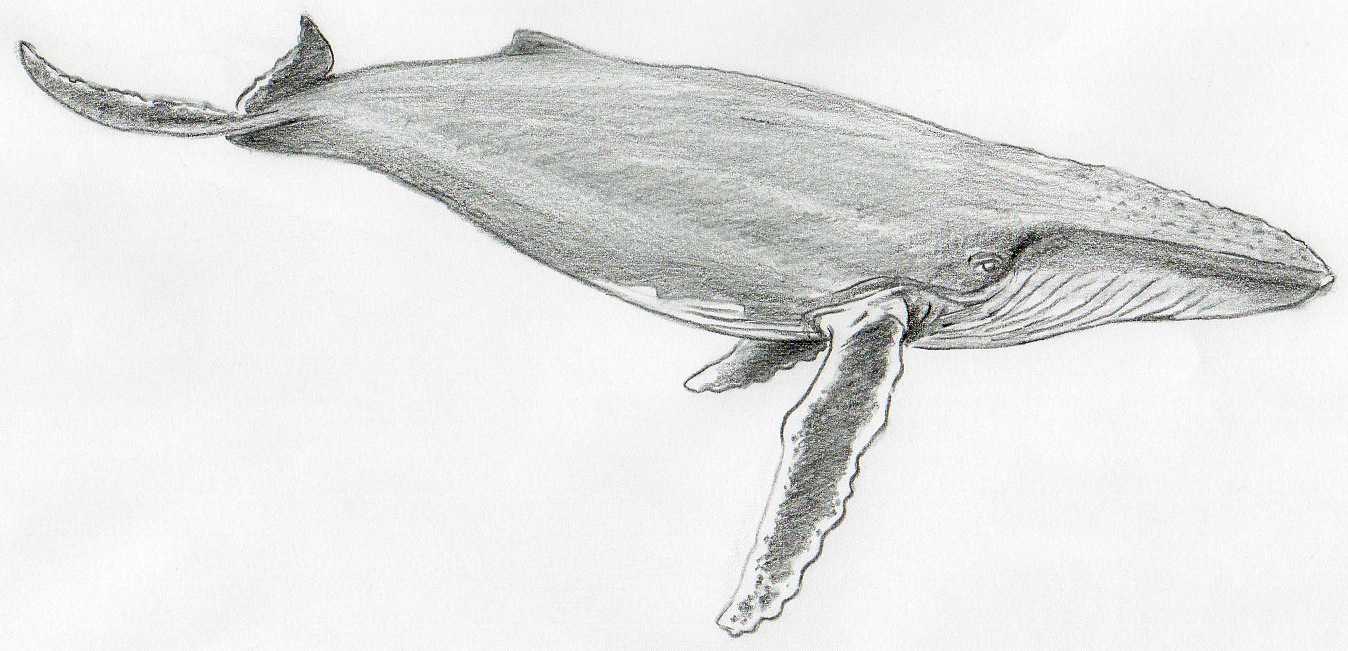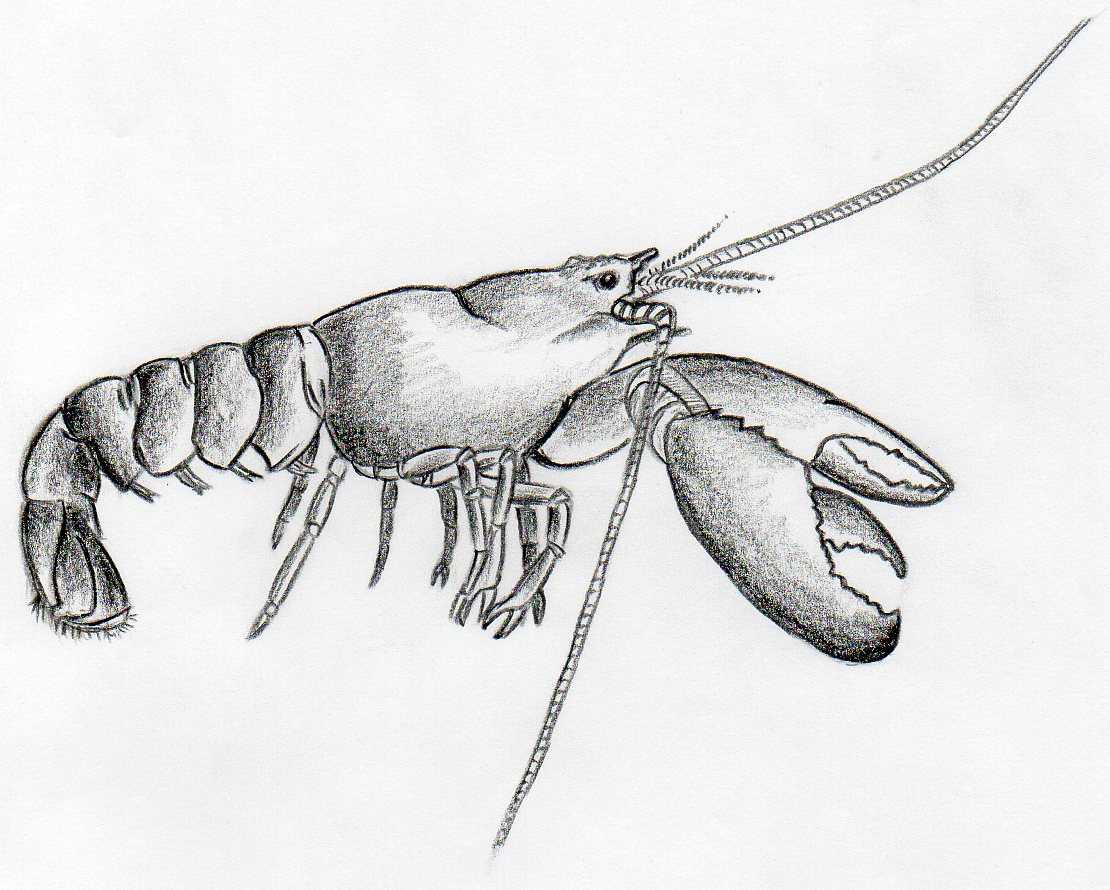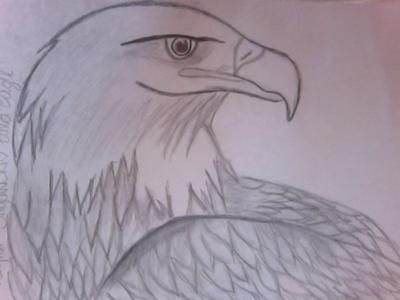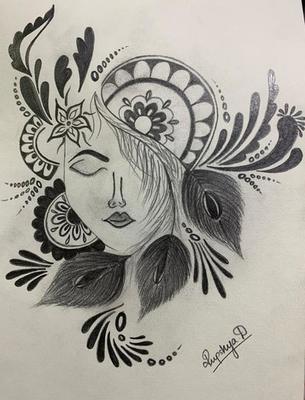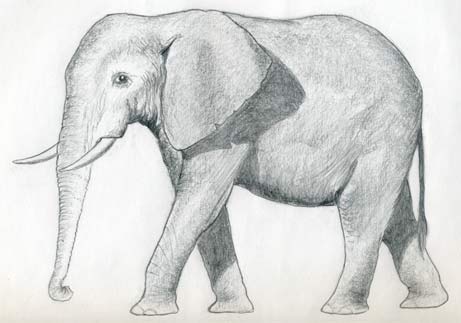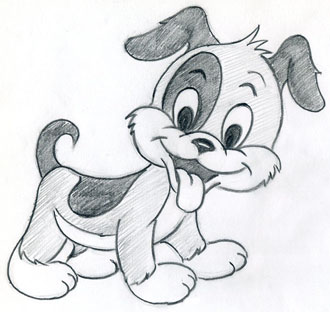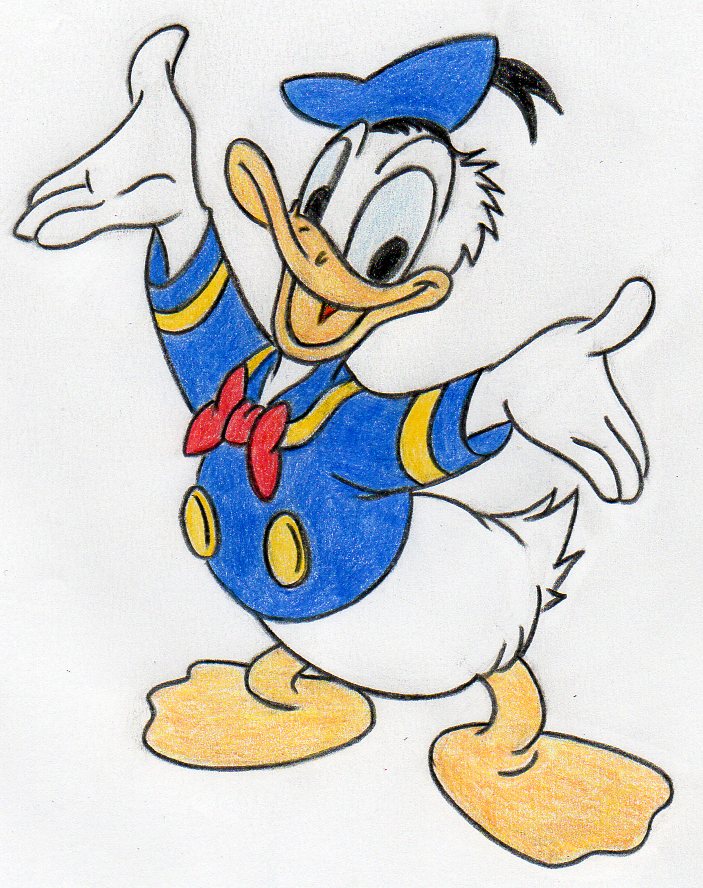How to Draw an Elephant
I hope that my simple guide on how to draw an elephant may contribute a little to elevate the consciousness about this beautiful animal.
I hope that my simple guide on how to draw an elephant may contribute a little to elevate the consciousness about this beautiful animal.
What is the difference between seeing animals in pictures and drawing animals?
Drawing animals makes you more conscious of their existence and beauty. Drawing them by pencil on paper makes you totally involved and participate in the process of creation.
Don’t you think that it’s incredible? Let’s take a quick look at
this elephant drawing. Please keep in mind that it is a finished drawing. It may look too complicated with its wrinkles, shades, etc.
Please ignore such details for now. We shall come back to these later during the drawing process.
Now just let me guide you and you’ll see to your own amazement that you can actually draw an even better elephant than this one.
You can print out this picture after enlargement and refer to it while drawing.
I would however encourage you, to draw this elephant directly from your computer screen.
Draw An Elephant Is Really This Easy
Before you begin to draw an elephant, I would like you to concentrate on 3 main parts of the body.
Think of this elephant as a huge snowman consisting of 3 circles in a horizontal position walking on four legs.
The only difference is that we will adjust the 3 circles that represent the body parts.
In your mind divide the elephant’s body into 3 main volumes. The biggest one is the belly, the middle one is the part of the elephant’s shoulders and the smallest one is the head.
Basically, when you capture these 3 volumes right, you’ve got the elephant’s body balance right.
Basically, drawing an elephant is very simple, but it has a few tricky parts. Please observe the body well again. Compare the length of the legs to the rest of the body. Notice the angles of the legs while the animal walks.
This is a dynamic picture which means that the elephant is walking and is in motion.
The front legs extend directly from the middle – shoulder ellipse. Draw the outline contours of all four legs.
Outline the head with the trunk and tusks. Make a rough outline sketch of the ear (only one of the elephant’s ears is visible).
Gradually start erasing the initial circles, ellipses and join each part of the body into one whole unit.
Do you realize that at this stage, you already know how to draw an elephant? You have almost perfect contours of an elephant’s body.
I say almost perfect because there probably are some small details we are going to correct as we go.
Gently refine the body contours and draw the tail. Before drawing the tail take a look at its length. Where does it come out of the body and where does it end?
This is the stage where you should really draw the final body contours.
If you observe carefully, you easily notice that I slightly moved up the place (height) where the tusks come out from the head.
I made this change to re-balance the size of the head to the rest of the body.
Add the elephant’s eye. Enlarge the picture and see how the eye looks like. While you draw the eye, please leave a small highlight on the eye pupil.
Every living thing has such reflection of light in its eyes and it looks more natural. The highlight creates that spark in the animal’s sight. It is a very important feature of an elephant’s individuality.
You can also finish your drawing here if you want, copy your drawing and make it a coloring page.
It is time to observe carefully the wrinkles on the body. This part is a bit sensitive because the direction of wrinkles often determines how each body part is shaped. It is good to keep this in mind while you draw an elephant.
It is not necessary to draw the wrinkles exactly as I did but you should direct them on your drawing roughly in similar directions.
Refer again to the ready-made picture and sketch the body wrinkles.
If you encounter difficulties with wrinkles drawing, observe your own hand or stretched fingers and I think you’ll get the best idea. After all, we humans are animals too ;-)
Now pay a bit more attention to the trunk. Elephant’s trunk is in fact a fusion of the nose and upper lip – prolonged. It is in fact one of the most important body parts.
Begin to darken the body. Be gentle. Hold your pencil tilted to make wide and weak pencil strokes that will easily cover the body in gray.
At the same time, you can also put shades where applicable. Always refer to the ready-made drawing.
As the light comes diagonally from the upper left corner, it naturally cast shade on various parts of the elephant’s body.
Ear(s) shade is the largest and most visible. We also cannot forget about shades on the elephant’s legs.
Adding shades on any drawing gives it instant plasticity. Shading gives the drawing a 3-dimensional look.
I think your picture is ready at this moment and you gained enough confidence to draw an elephant - any elephant you choose.
Didi You Enjoy Drawing the Elephant?
Check Out Also These Animal Drawing Tutorials:
Visitors’ Personal Gallery Pages
Enjoy the collection of personal galleries below.
Observing others’ artwork is always inspiring and might spark new ideas for your own creations.
We believe you’ll have a lot of fun exploring these pages!
|
| |||
Theme Based Visitors Galleries
The following Theme Based Galleries are a collection of selected drawings from various authors based on a certain theme. I would like you to get as much inspiration as possible for your own drawings.
SHARE YOUR DRAWINGS
Select The Category and Follow The Uploading Instructions
Share your own drawings, sketches or doodles by choosing a suitable
category below. You will be guided to the uploading process step by
step.
Latest Visitor's Drawings
-
You got mail
Dec 13, 24 05:52 PM
I really been enjoying trying new things. This is acrylic paint on an old saw blade. I have not posted in a while so I will be sharing more soon -
Imaginary pen art completed
Dec 12, 24 05:44 AM
As for handleterring of NATURE and the decor,brillant pens were used.And it is good for this style.So here is an imaginary pens art and as usual,dominated -
Still in progress
Dec 08, 24 05:25 AM
Ballpoint pens art. Imaginary. -
Respect others for self-protection...
Dec 07, 24 07:59 PM
Respect others for self-protection... -
Thieves are always punished
Dec 07, 24 07:57 PM
Thieves are always punished. -
carnivorous plant
Nov 25, 24 08:02 AM
carnivorous plant -
Imaginary pens art in progress
Nov 25, 24 07:59 AM
Dominated by colourful nature and focus on details. -
Chateau Trompette in Mauritius
Nov 25, 24 07:57 AM
Maybe this colonial mansion is not known to many, in Mauritius. Or maybe of all those who saw it, very few are aware that it is known as Chateau Trompette. -
Understand your own value
Nov 25, 24 07:55 AM
Understand your own value -
Be your own hero
Nov 09, 24 07:00 AM
Be your own hero. -
Place of tranquility
Nov 03, 24 04:00 AM
Imaginary pens art. Normal ball pens were used except for yellow colour done with a gel ink one. A place of tranquility dominated by nature. Even if in -
Inspired by lake Venna of India
Oct 29, 24 11:32 PM
Here is an imaginary pens art showing the atmosphere of Lake Venna which is located in Maharashtra in India. -
Birds can fly, why can't I?
Oct 29, 24 11:31 PM
Birds can fly, why can't I? -
Boy vs girl, who is the best?
Oct 29, 24 11:30 PM
Just half a girl and half a boy -
Cyclone
Oct 29, 24 11:29 PM
Cyclone

